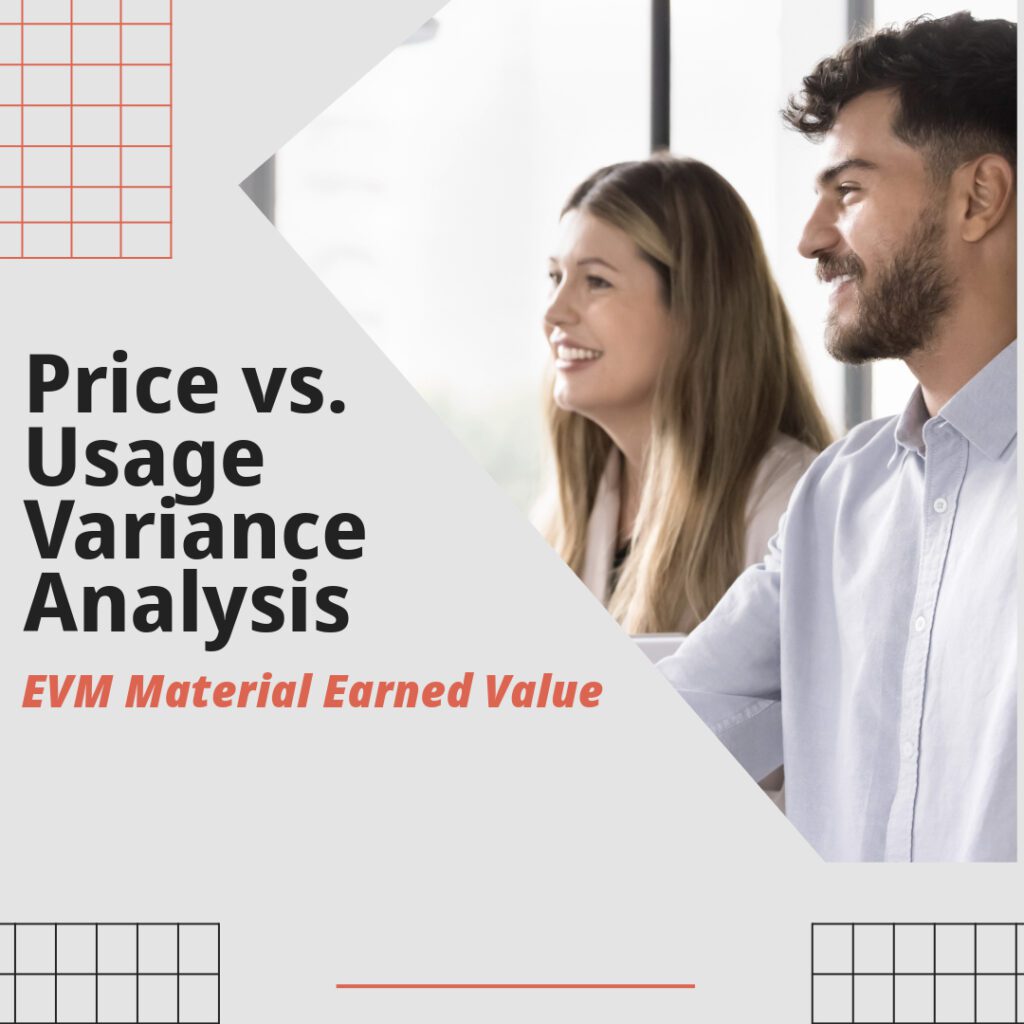
EVM (Earned Value Management) control account managers (CAMs) with material cost elements are required to conduct price vs. usage material cost variance analysis as a normal part of their root cause analysis for their control accounts. This analysis is the material counterpart to conducting a labor rate versus hours (efficiency) cost variance analysis.
Material price/usage analysis looks at the two components of a material cost variance:
- Price. How much of the cost variance was caused by the unit price paid for the material item differing from the earned value unit price for the material?
- Usage. How much of the cost variance was caused by the earned value for the quantity of the material differing from the actual quantity of the material?
A common question is “How can we do this when we have thousands of material items to account for on a project?”
The answer: Not all material items have to be tracked discretely to conduct an adequate price/usage analysis, with the general rule of thumb of discretely tracking about 80% of the material dollars.
Some contractors set a policy where material will be tracked discretely if it breaks a specific dollar value (for example, anything above a $5,000 unit price). Other contractors conduct what is called an “80/20” analysis of their estimated bill of material (BOM). The concept here is that on most programs, approximately 20% of the material items (larger dollar items) represent about 80% of the material dollars on the program, with the other 80% of the BOM being the smaller dollar items that total about 20% of the material dollars. In this case, the discretely measured items are any of the items in the top 20% of the BOM.
Some contractors do this segregation by the unit price of each material item. Others make the division based on the extended price (unit price times the number of units to purchase), sometimes placing a high volume/low price item on the discretely tracked 20% list. Either method is acceptable.
Even with this discrete material segregation, the price/usage analysis still needs to be performed. The difference is discrete items are tracked separately (e.g., a $250,000 radar antenna dish) from a commodity grouping (such as all connecting bolts – average planned price of $10 per pound).
The variance analysis method is the same for discretely measured items and for the homogeneous groupings of material items where:
Price Variance = (BCWP Unit Price – ACWP Unit Price) x ACWP Quantity
Usage Variance = (BCWP Quantity – ACWP Quantity) x BCWP Unit Price
Another common question is “Where do I get this sort of information?”
Most material departments or supply chain management teams maintain detailed listings of all materials the company receives as well as what particular projects receive. While these listings are generally used to identify material deliveries, late deliveries, material availability for transfers or borrow-paybacks, etc., they generally have the unit price and quantity purchased information necessary for the CAMs (or at least the material department) to perform the price/usage analysis required. It may require special runs, or sorts, of the BOMs or inventories that are maintained, but the information is usually available.
The CAMs can take these runs and conduct their algorithms to do the price/usage calculations described above. Generally, these systems contain enough information to discretely measure every part number to the lowest unit price item on the project. Earned value management, however, does not require reporting price and usage analysis on “connecting bolt #123 with a price of $0.0000134 per unit.”
Humphreys & Associates is available for EVM consulting, CAM certification and additional information on this topic. Contact us today.